
Getac B360 Pro: 30 second review
The Getac B360 Pro (2023) that was sent to us for review came with the following hardware:
Model: Getac B360 Pro
CPU: Intel Core i7-1260P Processor (12 cores, 16 threads)
GPU: Iris Xe (96EU) and Nvidia GTX 1650
RAM: 32GB (2 X 16 GB), DDR4
Storage: 1TB, M.2, PCIe 4.0 NVMe
Screen: 13.3" Wide Viewing Angle TFT LCD FHD (1920 x 1080)
SIM: 4G LTE mobile broadband with integrated GPS (optional)
Weight: 3.08Kg (6.79lbs)
Dimensions: 342 x 281 x 53.5mm (13.46" x 11.06" x 2.11")
Camera: FHD Webcam
Networking: Intel AX211, 2x2 MIMO, Bluetooth 5.3, Gigabit LAN
Ports: 1x USB 3.2 Gen 2 Type-A, 1x Thunderbolt 4 Type-C, 1x HDMI 2.0, 1x Serial port (9-pin; D-sub), x 1 + External VGA (15-pin; D-sub) x 1, Universal headphone/microphone combo jack
OS: Windows 11 Pro Licence
Battery: 2x 6900mAh batteries, optional third 4200mAh battery
PSU: 120W AC adapter
The Getac B360 Pro fits into a category of laptop that is generally referred to as fully ruggedised. But, compared with other products, the level of protection on this PC goes beyond that description in its industrial use construction.
Built to take the hardest knocks and the worst environments, the B360 Pro is sold as military-grade and mission-ready, out of the box. The outer shell allows it to withstand being dropped 6ft, temperatures from -29°C to +63°C (-20°F to 145°F), and it has independent certification to certified to MIL-STD-810H, MIL-STD-461G and IP66 levels.
Under its tank-like exterior is a 12th-gen Intel processor with integrated Intel Iris Xe GPU and up to 64GB DDR4 RAM. And, if that isn’t enough, Getac will fit an optional NVIDIA GTX 1650 mobile graphics card to boost GPU performance over the integrated option.
It comes with two hot-swap replaceable batteries as standard, with a wide selection of accessories to mount it to a vehicle, dock it in the office, or charge up to eight batteries at once also available.
So why wouldn’t you want one of these? The unit's weight may be an issue, with the lightest configuration coming in at 3.08kg (6.79 lbs) and the model reviewed here tipping the scales at a workout friendly 3.25kg (7.16 lbs).
That mass isn’t ideal for carrying if your expedition is on foot or you haven’t been to the gym recently. But the other issue with hardware with this level of specification is the price, being generally more expensive than rugged designs from different brands and at a level that might require senior management sign-off.
There are few PCs built this tough, and if your budget stretches this far, this might be the one to have.
Getac B360 Pro: Price and availability
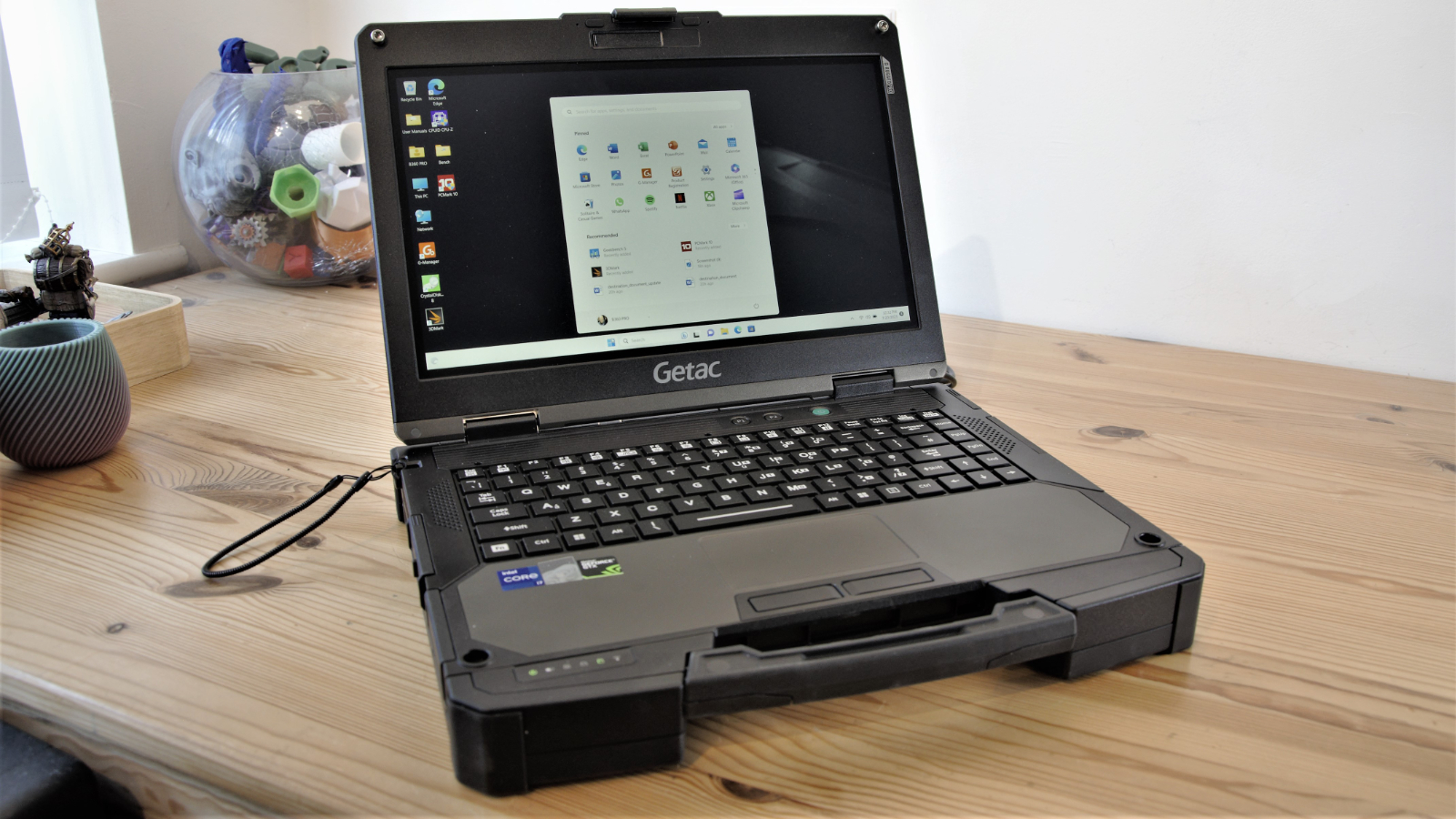
- How much does it cost? From $3800
- When is it out? It is available now
- Where can you get it? You can get it via a Getac-approved reseller.
Getac sells all its equipment through a global reseller network. Interested parties should start with the Getac website, where they can be directed to a suitable reseller.
Once in contact with a reseller, the exact specification for the B360 Pro can be discussed along with appropriate accessories.
The starting point for one of these systems is around $3,800 for a machine with an i5 processor with 8GB of RAM and 256GB of storage, and an integrated GPU.
But once a better processor, extra memory, more storage, and a discrete GPU has been added, the cost can rise dramatically.
The actual review machine was priced at £5,578.54 in the UK. Therefore, customers should budget more than $6,000 for a system specified like our review hardware, as they're very likely to need some accessories.
In short, machines built to this specification and quality aren’t cheap, and those needing them must budget accordingly.
- Value: 4 / 5
Getac B360 Pro: Design
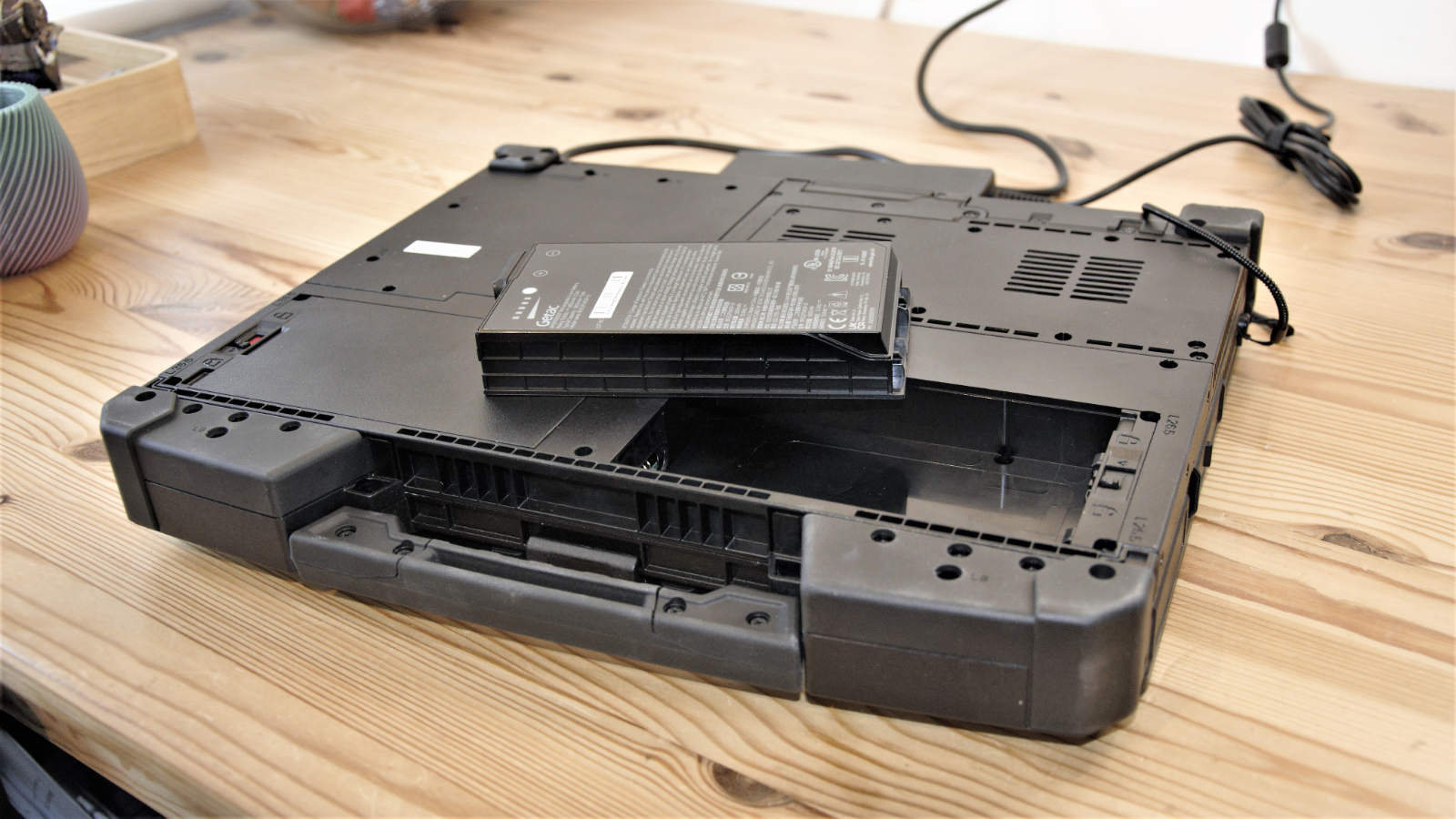
- Heavy industry
- Poor I/O port arrangement
- Numerous options
Picking up the 2023 version of the B360 Pro for the first time reveals what makes a computer tough enough to pass the requirements for MIL-STD-810H, MIL-STD-461G and IP66, does to its mass.
Our review system came in at a hefty 3.25 kg or more than 7 lbs, and it requires some reliable wrist strength to hold with one arm while using the interface on the touch screen with the provided stylus or finger.
As the hinge doesn’t allow the screen to fully fold back, the B360 Pro was never intended to be used as a tablet. However, it was intended to be used outside, and with the 1920 x 1080 resolution panel outputting an impressive 1400 nits, it remains readable even in direct sunlight.
What’s nice about this design is that the integrated handle is built to take the weight of the machine and is relatively comfortable. A locking latch releases the screen to open, and the touchpad area and keyboard are of decent scale and quality.
We’re fans of the trackpads with integrated mouse buttons since they avoid the vague nature of tapping on the pad in the hope that the speed is right to be recognised as a mouse click.
A feature we’ve seen on previous Getac hardware is the locking port covers that you push sideways to release. These are an excellent design for keeping dust and water out of the machine, as they don’t experience the same level of wear that pull-out rubber plugs will. However, when the machine is new, the sliding locks can be a little stiff, resulting in a small amount of frustration and the odd broken nail.
Where the designers of the B360 slightly lost the plot, in our opinion, is in the placement and mix of ports they included with this system.
Good ergonomics would suggest that the most often used ports on any system should be easily accessible, but here they’re the ones most out of reach.
On the left side is access to the NVMe slots, something customers are unlikely to need to open, and multiple blanking plates that cover optional modules. The right has more optional blanking plates, the 3.5mm audio jack and a single USB 3.2 Type-A port.
All the other inputs and outputs are on the rear, where they’re least accessible, including the single Thunderbolt port, the HDMI, the PSI inlet and the LAN port.
Obviously, you can avoid most of this trouble by using either the office or vehicle dock, but how this design ended up with only one easily accessible USB port is a mystery.
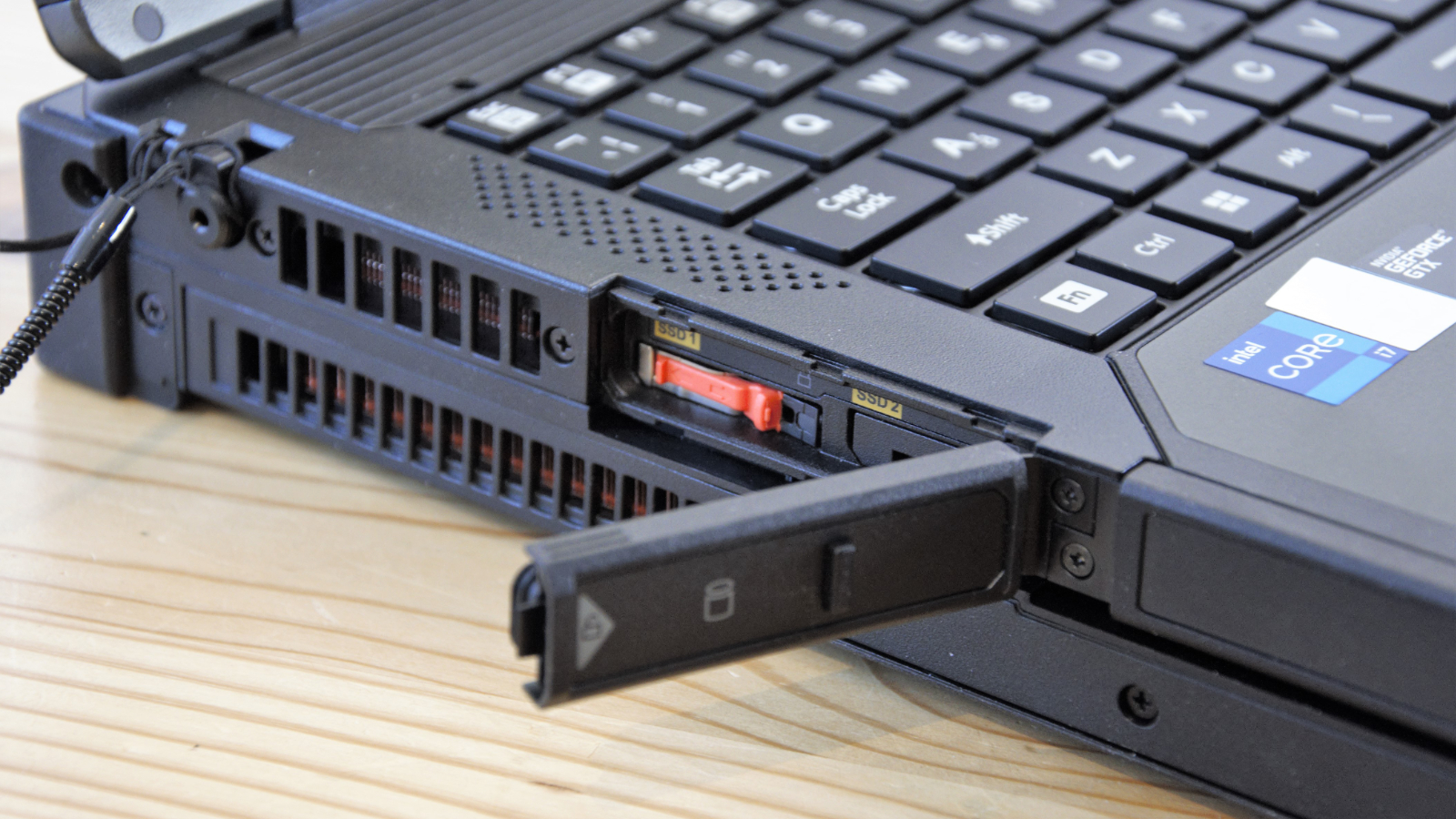
Where this machine differs from the typical rugged PC design is the level of customisation available, with no less than six panels on the outside that can be removed for special factory installations.
These include a SIM card slot (Mini-SIM, 2FF), RF antenna pass-through for GPS, WWAN and WLAN, and a dedicated GPS, 4G LTE mobile broadband with integrated GPS.
On our review hardware, the I/O area had a serial port (9-pin; D-sub) and an external VGA (15-pin; D-sub), but this can be swapped for other options that include extra LAN ports and DisplayPort outputs, among other things.
What’s mildly confusing, other than Getac is still supporting long-dead technology like VGA, is that all the LAN ports are Gigabit. Most PC makers are now offering 2.5GbE or better ports on their systems.
Overall, the priority of the designers here was patently to make something extremely resilient, but the port placement and the small number of USB ports need a rethink for those customers who don’t want to buy a dock.
- Design: 4 / 5
Getac B360 Pro: Hardware
- 12th Gen CPU
- GTX 1650 mobile GPU
- Mediocre Gen 4 SSD
- Huge battery capacity
The 12th Gen Intel processor in this system is good, but it's worth mentioning that the 13th Gen parts we’ve tested so far are superior in several important ways.
Our review hardware sported the CPU was the Intel Core i7-1260P (12 cores, 16 threads), but Getac offers a range of silicon from the Alder Lake generation that also includes the i5-1250P, i7-1270P vPro and i7-1280P vPro processors.
The Core i7-1260U is a slightly odd design where Intel only gave it four performance cores, with the other eight being efficiency cores. Only the performance cores get hyperthreading, explaining the sixteen-thread capability of this processor.
This CPU can address up to 64GB of RAM in both DDR4 and DDR5, but in the B360 Pro it uses DDR4, and in the review hardware were two 16GB SODIMM modules providing 32GB of total memory in a dual channel configuration.
We’ve seen the same platform used in the Lenovo X1 Carbon (2022), and it’s a decent performer.
Where this implementation differs is that in the X1 Carbon, the GPU is the integrated Iris Xe (96EU), whereas, in the B360 Pro, it’s been augmented by the inclusion of an Nvidia GTX 1650 discrete graphics card.
What needs to be made clear is that the GTX 1650 installed here isn’t the same as a desktop GTX 1650, a card that first appeared in 2019.
The critical advantage of a discrete video card is that they come with VRAM, and so don’t need to partition system memory to operate, as the Iris Xe requires. Offloading the GPU tasks to the GTX also reduces heat in the main processor and is also a more efficient use of power.
However, as we’ll cover in the performance section, it doesn’t turn the B360 Pro into a gaming platform.
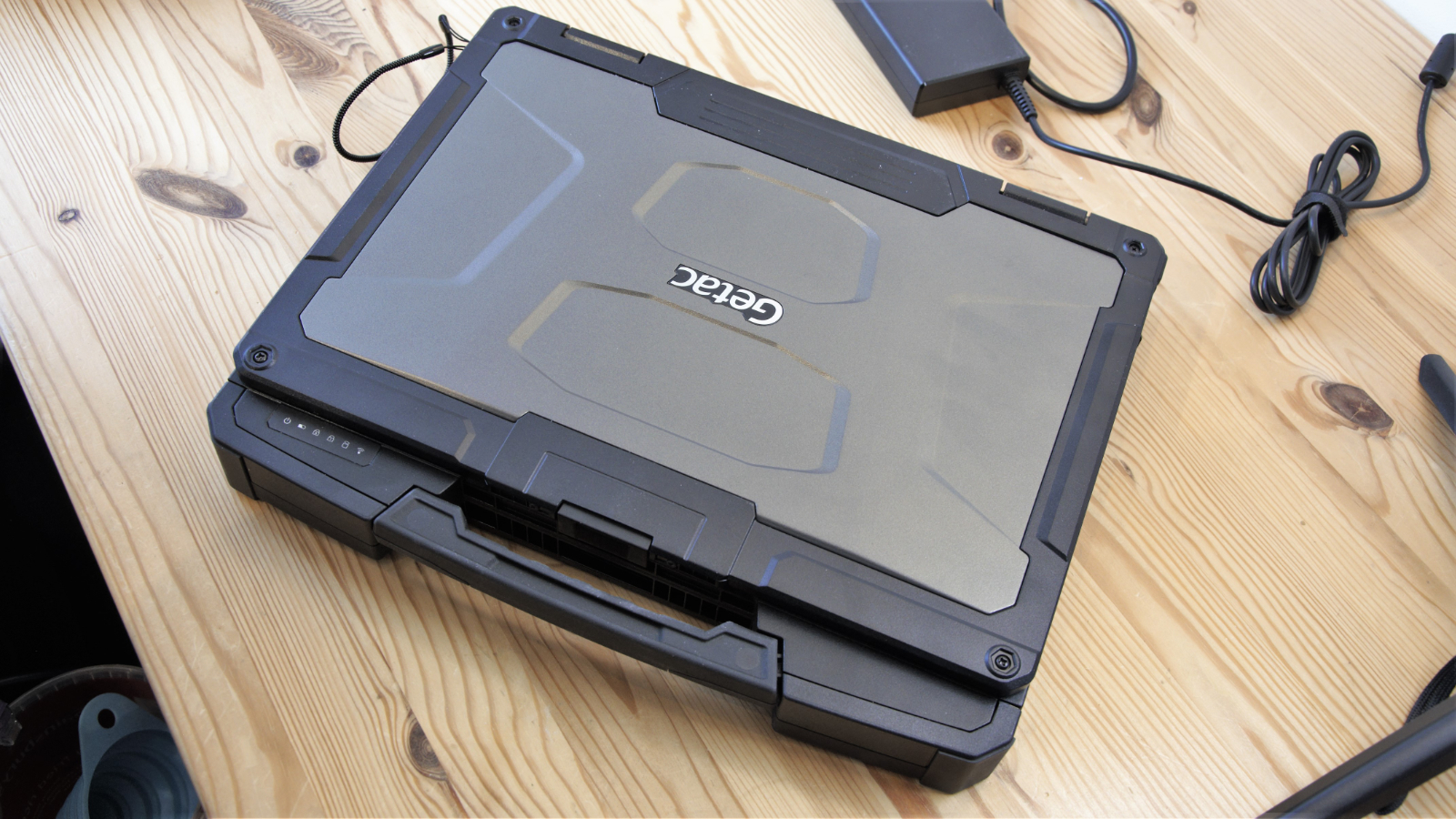
One downside to the 12th Gen CPU over the newer 13th gen options is that while the CPU has PCIe 4.0, the support chipset is only PCIe 3.0. But, the M.2 NVMe slots are connected to the CPU PCIe lanes, allowing them to use PCIe 4.0.
The NVMe provided by Getac was a CL4 Series made by the Solid State Storage Company, and CL4-8D1024 is the product number.
This device is one of those curious Gen 4 compatible drives that only system makers would choose, where they perform at the same level as a Gen 3 drive. There are faster and more power-efficient Gen 4 drives available. But as the machine has two slots, the cloning of the existing system to better, faster and larger capacities is easy enough to do.
Where the B360 Pro redeems itself is with its batteries. The review machine came with two 6900mAh batteries, but it can also mount an optional third 4200mAh battery to increase the total capacity. Adding all those up provides a total of 18000 mAh.
But the voltage on these batteries is different, making the calculation 75Wh from each of the standard batteries and 47Wh from the third unit, giving a total of 197Wh. That’s easily the biggest battery capacity we’ve seen on any laptop and more than three times what we expect from a rugged design.
- Hardware: 4.5 / 5
Getac B360 Pro: Performance
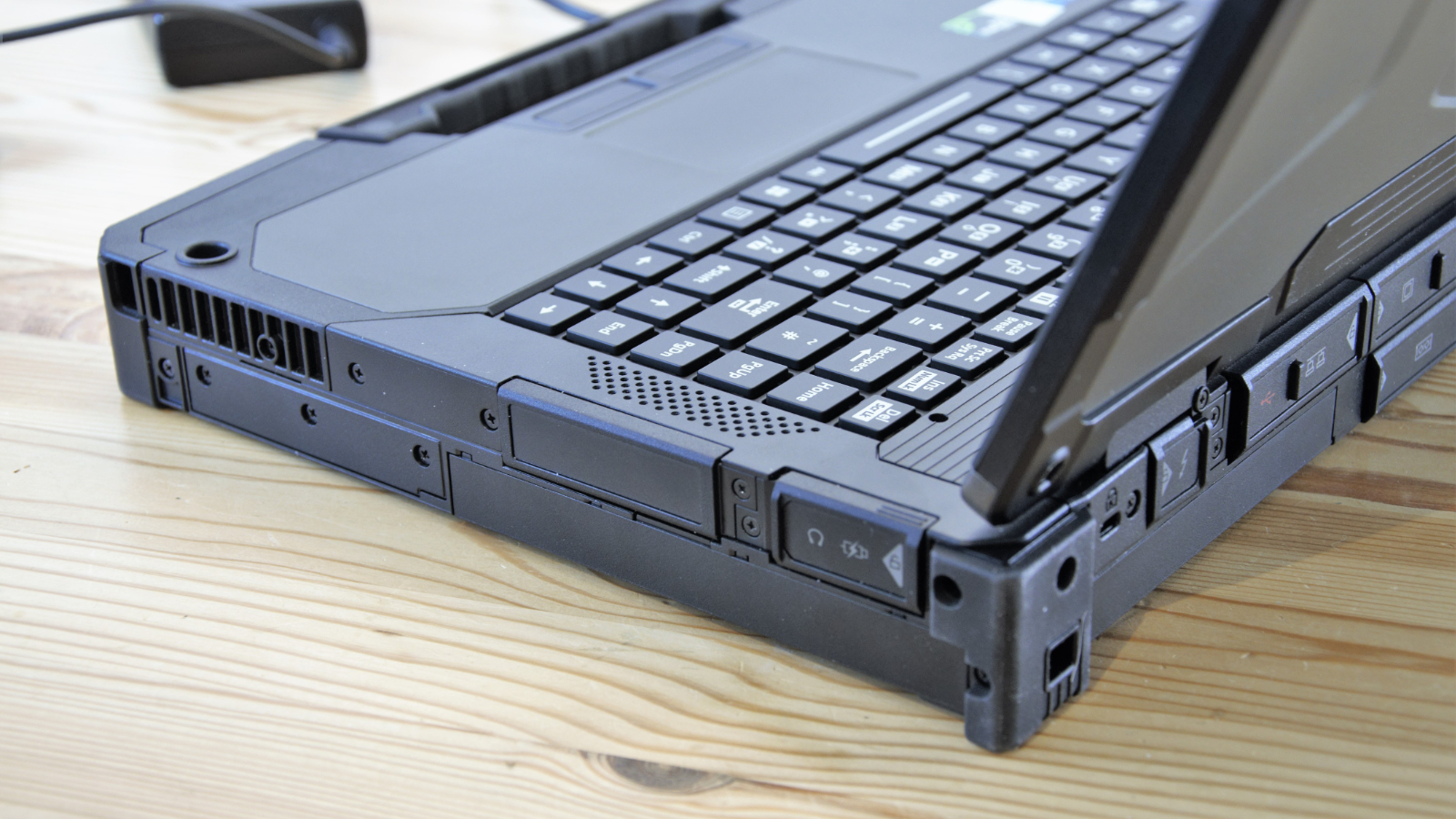
- Powerful CPU
- Better than an integrated GPU
- Disappointing NVMe drive
This is how the Getac B360 Pro Rugged Extreme performed in our suite of benchmark tests:
3DMark Wild Life: 19,543; Fire Strike: 7781; Time Spy: 3570;
Cinebench R23 CPU pts: 1485 (single-core); 6972 (multi-core)
GeekBench 5: 1596(single-core); 7446 (multi-core), 39080 (OpenCL)
CrystalDiskMark: Sequential Read: 3776MB/s; Sequential Write: 2682 MB/s
PCMark 10 (Office Test): 5999
PCMark 10 (Battery Test): 27h 5m
Windows Experience Index: 8.1
Regarding computing performance, the difference between the B360 Pro and any other computer using the same Intel processor is within the variance expected from benchmarks.
The Core i7-1260P is a solid processor with decent multitasking, but it has been overtaken by Intel 13th Gen parts and AMD Ryzen 7 Pro series.
That’s not to say it is a wrong choice, far from it, but things have moved on in the four years since this was new silicon.
However, the B360 Pro offered a few performance surprises, some good and others less wonderful.
Less of a surprise, but still disappointing, is the performance of the installed storage, as provided by the Solid State Storage Company provided NVMe drive. It delivered speeds that would have been respectable for a Gen 3 drive, but it’s a Gen 4 mechanism. Getac, better drives are available.
With that slight misstep covered, the B360 Pro has two highlight results here, one of which is truly outstanding.
The first is the GTX 1650, which we need to say isn’t a patch on the desktop version of this card, but it is still a significant improvement over the integrated Iris Xe and its ilk.
Looking at its speed in the 3DMark, GeekBench OpenCL and PCMark10 tests, the only machine we’ve seen recently that can beat the B360 Pro is the Dell Precision 5470 with its RTX A1000 discrete video. That’s a video card that can generate an OpenCL score of over 50,000 versus the 39,080 of the GTX 1650 in the B360 Pro, but it's not in a rugged design.
But compared to the 13,000 or so that the Iris Xe can achieve, the GTX 1650 card does deliver a significant boost for those running apps that use accelerated graphics.
However, as impressive as the video card is, the GPU isn’t the star of the B360 Pro show. That would be the batteries.
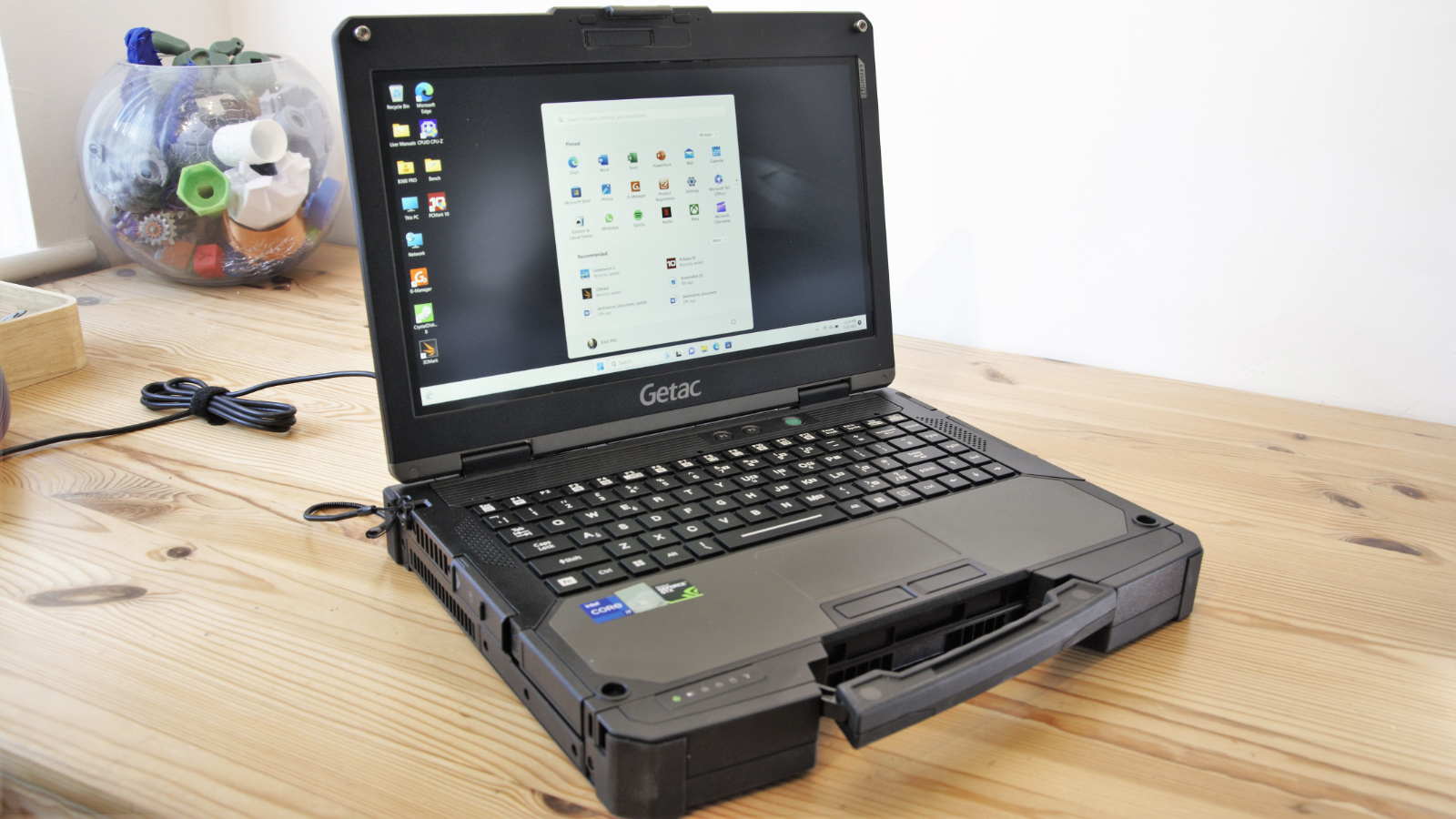
Our review machine had two hot-swappable batteries, each rated for 6900 mAh or 75Wh, offering a combined power reserve of approximately 150Wh.
With two power packs, it is possible to swap these modules while the machine is running, and Getac sells external chargers and extra batteries for this purpose.
As we mentioned earlier, the total battery capacity can be further augmented with a third smaller battery, but that isn’t easily swapped out, and one wasn’t included in our review machine.
But even without the third battery, the B360 Pro was able to run the PCMark Office battery test for an incredible 27 hours and 7 minutes. For those destined to be away from mains power for a working day or days, and with the ability to hot-swap fresh batteries, this could extend the operating timeframe for the B360 Pro indefinitely.
This machine offers incredible endurance and flexibility for those that won’t always have a handy power socket.
- Performance: 4.5 / 5
The B360 Pro is a unique offering that combines a remarkably robust chassis with some of the better parts that can be used in a modern laptop. While a 13th Gen version of this design might be even better, the 12th Gen Intel CPU and Nvidia mobile GPU used here is an impressive combination.
Typically, the problem with powerful PCs with lots of memory and storage is that the high-performance parts burn through the battery when not mains powered.
But, the B360 Pro has that more than covered with exceptional standard capacity that can be further upgraded and hot-swapped as needed.
The trade-off here is that this is expensive hardware that requires a good selection of optional accessories for deployment, and it is cumbersome to carry for an extended period or distance.
Getac B360 Pro: Report card
Should I buy a Getac B360 Pro?








